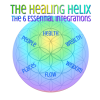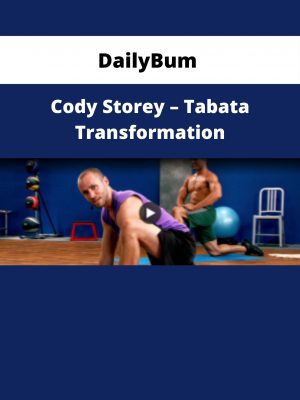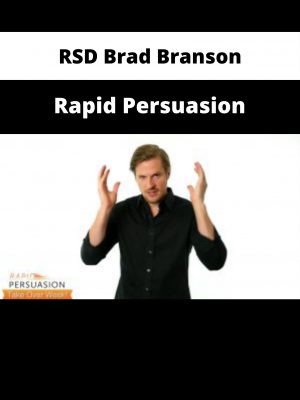Michael Jen – Musde Balance and Function System – Postural Alignment Exercises
$29
Shopping Instructions:
- DISCOUNT 15% : SHOP15
- Product Delivery: Within 1 – 12 hours after purchase.
The human body is great when it comes to adapting. Postural dysfunctions cause your body to compensate and as athletes, we ask our bodies to do a heck of a lot of compensating. File Size: 260.5 MB
Michael Jen – Musde Balance and Function System – Postural Alignment Exercises
I’m curious if anyone has experience with this system, or comments on the premise? I’ve been reading a thread on another forum about it, that makes it seem very impressive. The basic idea is that many problems occur due to poor posture, and that there are particular exercises that can be done to remedy this. Its similar but superior to the ‘Egoscue Method’. I mention in the thread Barret’s article where he says there is no evidence to show muscle-development aids posture, but it gets rebutted [see end of thread]. Anyway, I’ll reproduce here the main comments by the instructor I’m speaking to of Geoff Gluckmans’ system. Sorry its such a long post, but I suppose this is the place where people might find it interesting.
================================================
Here’s general idea of the system that I have been trained in. It is call Muscle Balance and Function. The human body has a certain “functional design”- basically what one would consider perfect posture. By the way, please don’t think that posture only has to do with slouching and standing up straight. Within our lives, we do things to take our bodies out of that functional design (sports, sitting for long periods of time, accidents, surgery, traumas, what we do at our work, etc…). As a result, postural dysfunctions occur. The farther your body begins to deviate from this functional design, you then begin to feel pains, increased susceptability to injuries, etc….
The human body is great when it comes to adapting. Postural dysfunctions cause your body to compensate and as athletes, we ask our bodies to do a heck of a lot of compensating. However, there is a point in which our bodies can’t compensate any further and that’s the point I reached before I began this therapy on my own body.
Think of your body like a car. If the alignment on your car is off, you can still drive the car, however, the tires will wear down prematurely and unevenly. You can rotate the tires, balance them, replace them, or try to patch them up, but if the alignment isn’t straightened out, the tires will wear down prematurely and unevenly no matter what you do because all that other stuff does not get to the core problem.
Let’s say the alignment is off and makes your car sway to the right. Like I said, you can keep driving on it and you can even drive straight by compensating by turn the steering wheel slightly more to the left. Eventually, the tires wear down so much in a certain spot that the tire may get a blow out. After getting a blow out, some people learn their lesson and fix the alignment. However, there are some people who will drive with a blown out tire, letting metal grind on pavement. Those people are really screwing up their cars.
So in the Muscle Balance and Function (MBF) System, what we do is you look a person’s body, see the postural dysfunctions, and give the person corrective exercises, based on physics and biomechanics, in a specific sequence to get their body to return to its functional design. The various dysfunctions begin to disappear, you often see reductions or all elimination in pain. It is pretty amazing how the body is able to heal itself when given the proper stimulus.
What makes this postural alignment therapy different from physical therapy, chiro, MD’s, is that we do not chase symptoms. We look at the body as a whole. Let’s say you have neck pain. An MD would do some tests on your neck and if it is something that did not feel need surgery, they would probably give you some pain killer or anti-inflamatory and send you on your way. A physical therapist may give you some stretches and exercises for your neck, put you in traction, or put some heat or ice. A chiro may do some of the things that a physical therapists would do, but the main thing is they would adjust your neck. A massage therapist would obviously massage your neck. In the MBF system, I would look at your entire body as a whole and I can pretty much guarantee you that I wouldn’t give you a single exercises that isolates your neck.
Here’s a great example. My neighbor complained about a pain on the outside edge of her foot when she walked. She went to a foot doctor and the MD told her that the problem was that her calves were too tight. He told her to do certain stretches, had her buy orthodics, and made sure she had good running shoes. She did all that, but the pain in her foot never went away. I looked at her and told her that the problem was not in her calf, but rather was a result of everything else abover her leg. I told her to put her hands behind her head, spread her elbows, and squeeze her shoulder blades together. I then had her walk and asked her how it felt. She said that she did not lean on the ouside of her foot and her foot did not hurt when she walked. I told her that if the problem was truly in her calf like the doctor had said, putting her arms in a certain position would have made no difference. Later, she went through an entire personalize program and her foot pain was gone.
Like I mentioned before, look at what causes our dysfunctions- movement or lack of movement (static positions). BJJ is movement. Sitting at a desk in front of a computer is a movement (or lack of movement). If you look at someone who sits in front of a computer all day, your going to see someone with a head and neck sloped forward, rounded shoulders, and a flat back- and your going to see someone with neck and shoulder pain.
So if movement can move your body out of position, then it makes sense that movement can move your body back into position…and that’s what the MBF system does. That is why people say that chiro adjustments are “addictive” and that chiro’s are trying to scam you by getting you to come in to see them regularly. The reason that happens is because after the chiro’s adjust you, your bad posture pulls the adjustment back out of place. On personal note, I think the combo of posture therapy and a good chiro and ART is great combo.
Postural alignment therapists simply give you a personalized menu of exercises to return you to your functional design. The therapist puts together a program for you and it is up YOU to do it daily to fix your own problems. Why do you have do it is daily? In order to counteract all the things that you do every day to mess your body up- BJJ; sitting for hours in front of the computer hunch over like a monkey; sports like golf, baseball, tennis that rotate your body in 1 direction; etc….
Get immediately download Michael Jen – Musde Balance and Function System – Postural Alignment Exercises
Your posture determines the position of your skeleton, all your internal organs, your circulatory system, and your nervous system. So this not only has a direct effect on your health, but a huge effect on sports performance and I will talk about that later.
Let’s say you take 2 people with the exact same limb length, size, weight, etc… One person stands with his feet perfectly straight and the other person is toed-out (duck footed). Have the 2 people at a starting point and a finish line 100 feet away. Have those 2 people take the exact same number of steps. When the person with straight feet gets to the finish line, the person who is duck footed (which is extremely common) will actually be about 15 feet behind (if their feet were angled about at about 15 degrees) even though they look the exact same number of steps.
Why did does this happen? Because of physics. For every force, there is an equal an opposite force. The 2 people are trying to move forward, however, the person who is toed out is not generating and equal and opposite force directly forward. The position of his feet is actually generating force diagonally forward.
So when you talk about sports performance, think about how being duck footed effects an athlete’s performance. That athlete has to expend more energy run the same distance than another athlete that is properly aligned. Think about how that effects speed.
Let’s talk about “cardio”. I remember when I was in junior high, we would have to run in PE class. After we ran a mile, the PE teacher would tell us to put our hands behind our heads. Why? Because he wanted to maximize the capacity of our lungs so we could get as much oxygen as possible as we were sucking wind after that run.
With that in mind, let’s look at an adult that is slouched over. Remember that your posture determines the position of your organs. With that slouched posture, you feel that your lungs are capable of maximizing its capacity as you do your aerobic conditioning?
There are many more issues when it comes to sports application, but I only mentioned a couple. Postural dysfunctions, like an infection, can become worse over time when untreated, especially when people push their bodies to its limits. Of course old age will eventually effect us all, but you have to wonder how much of the inability to perform is because your dysfunctions have gotten worse as time has passed versus the actual aging process.
The Egoscue Method does correct posture and uses similar exercises, however, the MBF System is completely different in its methodology. My instructor, who created the MBF System, actually worked with Pete Egoscue in the early 90’s and was one of the first 4 therapists who helped Pete Egoscue open his clinic in San Diego.
Pete Egoscue is a genius, however, he did not want others to know exactly what he knows. He holds out information, even from his own therapists. One of my students got a menu from a very experienced Egoscue therapist. I looked at the menu and saw that there was one exercises he really shouldn’t be doing as it was harmful to his knees. Coincidentally, my student said that the particular exercises did hurt his knees. I re-wrote my students entire menu and he felt a lot better.
The biggest difference between MBF and the Egoscue Method is that MBF is an actual system that is based on physics and biomechanics in its application. The Egoscue Method has no system. I know this because when I originally wanted to learn posture therapy, I took the Egoscue course. The course was so terrible that I walked out half way through and asked for my tuition back. I have had instructors hold back information in my BJJ training, so I knew exactly what the people at the Egoscue course were trying to do. Having gone through that sorry ass course, I can not recommend the Egoscue Method anymore knowing how their therapists get trained and knowing that there is something better out there. My feelings were confirmed when my instructor later told me about conversations he had with Pete and also when I found out how many of their clinic directors were frustrated and felt that info was being held out on them.
I highly recommend people read Pete Egoscue’s book “Pain Free” and “Health in Motion”. Can the Egoscue Method help people? In a way, yes, because when you have so many people who are extremely dysfunctional giving them any functional posture exercises will help. The Egoscue Method has helped many people. However, if you are going to spend your time, money, and effort, I’d feel a lot better knowing that I was doing a program that was 100% correct rather than only 70% correct.
With posture therapy, we do not categorize exercises like how most people think. We do not do “for back pain we do these exercises” or “If you see an excessive anterior tilt of the pelvis, do these exercises”. If you do that, you are not looking at the body as a whole.
By the way, I have found that there are 3 instances in which this therapy does not work:
1. You do not do your prescribed program every day.
2. You do not do all the exercises or in the exact sequences given to you.
3. You do not do the exercises technically perfect.
When I was 19, I found out I had a bulging disc in my low back. The neurosurgeon said that the disc was not ruptured nor was it hitting either of the main nerves that go down my leg so I didn’t need surgery. So he sent me to physical therapy. In physical therapy, they basically do the standard thing for back problems- work your abs and stretch your hamstrings. This did nothing to ease any of my pain nor did it make me more functional.
Let me explain why “strengthening your abs” can actually not be productive. Let’s say you have an posterior tilt in your pelvis (as if your tailbone is tucked under), flat low back, excessive rounding of the upper back, and rounded shoulders. In this particular situation, your ab muscles are already in a position where they are tight and contracted because of how “curved and hunched over” you are. So in fact, doing more ab work is making your situation worse because you are making your abs contract and tighten even more.
Now the answer is not “strengthen your low back” either. In the particular situation I mentioned aboved, your low back muscles are in a state of constant flexion. This means they are constantly working to hold you up against the force of gravity when you are standing because you are hunched over so much. If you try to strengthen your low back muscles, you are now working muscles that are already working too hard in the first place. Imagine having your arm bent at a 90 degree angle all day and then doing bicep curls at night. That’s definitely not going to make you feel any better.
I wanted to mention that people often find tremendous relief from pain right from the start, however, keep in mind that 1 menu of exercises won’t fix all your problems. This stuff is good, but it is not magic. Changing your body is a process and there are many factors that you must consider….
A problem that has been ingrain in a person’s body for 50 years is doing to take a lot longer to change than a problem that has only existed for 2 years.
You must also think about all that you are doing during the time you are not doing your exercises. If you are given a 20 minute menu, what are you doing the rest of the 23 hours adn 40 minutes of the day? Sometimes you are messing yourself up so much that doing a 20 minute menu once a day may not be enough.
In this method of therapy, we have certain priorities when it comes to posture problems that need to be fixed. There are certain problems that are extremely destructive on the body and those things need to be taken care above all else. So it is not possible to fix everything at once.
In addition, we cannot predict what part of your body will change sooner than other parts. For example, let’s say that you have counter-rotation in your body- your torso is twisted in one direction and your hips are twisted in the opposite direction. It may happened that your torso rotation comes out first, but the pelvic rotation decreased much less. In a second menu, we would then address the pelvic rotation more.
A very interesting thing is that many times you will have certain dysfunctions that are so strong that it covers up other dysfunctions. Then when when one thing is fixed, it reveals something that was not seen before. For example, I originally thought I had left side forward rotation in my body. However, I actually had counter rotation. What happened was that my upper body is disproportionally strong in comparison to my lower body. So my upper body rotation “overpowered” my lower body rotation, so it appeared as if my left hip and torso were rotated forward. Once my torso rotation was removed, my hips were “released” by my upper body and then I suddenly saw rotation in my hips in the other direction.
Personally, I believe I have gotten faster results than the average person. Why? First, I never miss a single day when it comes to doing my exercises. Second, especially, in the beginning, there were times I was doing my menu 2 times a day. There were even occasional days that I did it 3 times in one day. Third, I have had 8 menus. I did not want to just relieve pain, I want make my body as functional as possible and be as far away from pain as possible.
I am not too familiar with all the different programs out there. However, I can tell you that joint mobility, flexibility, or strength is not the way to measure functionality.
For example, a man may have a 15 degree anterior tilt in his pelvis and excessive curve in his low back. Because of that tremendous dysfunction, that guy may have a what appears to be very good flexibility and strength when it comes to bridging and back bending.
I have seen yoga instructors with numerous dysfunctions yet their joints seem to have flexibility far beyond what most people are capable of.
Remember that everyone’s bodies are different. Therefore, there cannot be one standard program that works for everyone. That is why when I give a menu of exercises to someone, it is specifically for that individual and will differ from other individuals. For example, in yoga class, I often hear the instructor say to “tuck your tailbone in” to all the students when they are standing. What I have noticed is that many female yoga instructors tend to have a strong anterior pelvic tilt. So “tucking” their tailbone in makes their pelvis more neutral when they stand. However, what about the people taking the class who have a posterior tilt? Having them “tuck” their tailbone is just making their condition worse.
OK, I have some comparison pics of myself. I have pics right before I started the posture therapy and then I look some new pics today.
By the way, here’s a list of my posture problems which can be see on my “before” pics. Check out all the problems that I had and you can see why my body was in such bad shape:
1. Leaning my weight on the outsides of my feet.
2. Both feet pointing slightly outward, but the right foot more outward than left.
3. Bow legged
4. Left femur rotated outward more than right.
5. Left hip higher than right
6. Hips laterally shifted to the left
7. Right hip more forward than left (rotation)
8. Posterior tilt of the pelvis
9. Flat low back
10. Left shoulder higher than right
11. Shoulders too far forward, rounding of both shoulders (left more than right)
12. Left side of torso more forward than right (rotation that was opposite direction of hip rotation)
13. Head offset to the left
14. Head rotated towards the left (opposition direction of torso rotation)
15. Head and neck sloped too far forward
16. Knee flexion in both knees, but left more than right
If you are interested in seeing these “before” and “after” pics, e-mail me and I will send it over in 2 Word files.
Get immediately download Michael Jen – Musde Balance and Function System – Postural Alignment Exercises
————————
Its lists peer-reviewed medical studies that show no relationship between strength and posture, specifically for shoulder position, pelvic tilt, and lumbar lordosis. One of the studies even included a full PT designed exercise program intended to alter pelvic tilt and lumbar lordosis, with no results.
———–
he says: In the link you mentioned above, the reason why the methods used by physical therapy did not resolve the issue of lordosis and excessive anterior tilt is because they are trying to change a postural dysfunction by strengthening the muscle on the exact opposite side. That’s also why you aren’t going to change the posture of a person who is thorais offset to the left by strengthening his right side or remove rounded shoulders by having them do more seated rows.
In addition, before your strengthen, you must re-balance the body or else you are just building strength on top of a problem.
Michael Jen – Musde Balance and Function System – Postural Alignment Exercises: Sample
Here’s What You’ll Get in Michael Jen – Musde Balance and Function System – Postural Alignment Exercises
Related products
Personal Development
Personal Development
Personal Development
Personal Development
Personal Development
Personal Development
John Dupuy ft Leigh Spusta – iAwake Technologies – Deeply Theta
Personal Development
Personal Development













